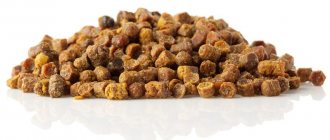Gladioli - flowers beloved by many gardeners require attention. They need to be dug up in time, trimmed, and then stored for gladioli storage in winter. There are many different options for storing gladioli in winter and we will tell you about all of them. We hope you will choose the most suitable method for yourself and save your favorite varieties of gladioli until spring.
To ensure that your gladioli delight you with abundant flowering and large corms, start cutting flowers according to the following scheme:
- Gladioli should be cut when the flowers are partially open.
- The best time to cut a gladiolus flower is when the bottom two flowers have bloomed.
- I cut the peduncles with a sharp knife early in the morning or in the evening so that the remainder of the peduncle is deeply hidden between the remaining leaves, of which there should be at least four on the plant, and which should ensure the further growth and development of the corm. After all, she needs to gain strength to please us with lush blooms next year.
The time when it is best to remove gladioli from the flower bed can be easily calculated. 30 - 50 days should pass after flowering, and then the gladioli can be safely dug up. The above-ground part of the plant should die off during this time, and only then can the gladioli be dug up and trimmed.
After digging, the gladioli are trimmed. And this must be done very carefully! Under no circumstances should you trim, tear off or twist the stems and leaves of gladioli until they die completely. Their death occurs exactly 30 - 50 days after flowering.
Why is gladiolus dug up for the winter?
The reason for digging up the plant is quite simple - gladiolus does not tolerate cold or low temperatures. If the bulbs are left in the ground over the winter, they will simply freeze. They are not able to withstand even temperatures below three degrees Celsius.
During this period, damage to the bulbs begins and this process is irreversible. That is why they are dug up and put in a warm, dark place where they will wait for spring.
You need to know how to dig up gladioli, because this process has its own subtleties. How the bulbs are removed from the ground correctly depends on the condition of the planting material.
When to dig
For the winter, you need to dig up gladioli in accordance with the region, varietal characteristics and their flowering period. Also, remove all those corms whose foliage has already turned yellow and dried out. They are already fully ripe or, which is also likely, they may be sick and need urgent disinfection. But, there are also those gladioli whose corms did not produce flower arrows and young plants grown from children - they are the last to be dug up. They ripen in about 50 days and it is not recommended to rush with them.
When to dig up gladioli of different varieties and colors
It is easy to understand when to dig up gladioli when the variety and place of its planting are not forgotten. Early varieties bloom first - in the last days of July and early August. They are dug up, accordingly, earlier. Together with them, those whose foliage has turned yellow are also removed. You also need to take into account some other points that have a significant impact on the timing of digging up the bulbs:
- First, the early varieties are dug up along with the middle ones, then the later ones and those plants that were grown from children are only removed from the soil.
- Dark varieties of gladioli are removed first.
- Plants that did not bloom and were planted only for the first time need more time for the corms to ripen; they are removed last.
On a note!
It is advisable to remove the bulbs from the soil when they are not fully ripe - this will help to collect them together with the children.
Excessively mature ones sometimes crumble when dug up and it is difficult to find fallen children in the ground. When there is no information about where and what variety grows, when it bloomed, then the timing of digging is determined by the shade of the inflorescences. The first to be stored are those bulbs that produced flower shoots with buds of scarlet, violet, lilac and almost black shades. Such gladiolus corms are more susceptible to diseases than others.
Time selection depending on region
https://youtube.com/watch?v=sR20AUtXno0
The time for digging depends on the region in which gladioli are grown. In the southern regions, where the average winter air temperature rarely drops below 0˚ C, it is permissible to simply insulate the corms after cutting off the above-ground part. The approximate timing for digging up gladiolus corms, depending on the climatic characteristics of the region, is as follows:
- In the middle zone - mid-late September, before frost.
- In the northern regions - Moscow and Moscow Region - corms are dug up throughout September.
- In the southern regions - until the second half of October, focusing on the end of flowering.
- Krasnodar Territory and Crimea - if the winter is promised to be warm, then it is not necessary to dig it up, it is enough to cover it with agrospan, film, spruce branches or other similar material.
- In the Leningrad region - from the first ten days of October, but you need to catch it before frost.
- In the Urals - throughout September, but until the night frosts began.
- In Siberia - in the first half of September, until the temperature reaches 0˚ C.
- In Ukraine, they don’t delay digging, since they need to do it before mid-October, when the average temperature begins to approach 0˚ C.
- In Belarus - in the last August, first September days. When the weather is rainy, the corms need to be thoroughly dried before being sent to winter storage.
On a note!
In the northern parts, where the climate is harsh and only the earliest varieties of flowers are grown, the bulbs are removed when they are not yet fully ripe. They are often dug up along with the ground part and ripened in flower containers, and only then preparation for storage begins.
What time should you do this?
Plant bulbs must begin to be dug up after they have flowered and about 35 to 45 days have passed. Approximately this will be the second half of September or the beginning of October.
You shouldn’t delay this matter too much; you shouldn’t keep the bulbs in cold soil for a long time. You can visually inspect the bulb and if it is covered with scales, then the bulbs are ripe and can be dug up.
This should be done as follows:
- To begin with, large bulbs are dug up, after which small ones are carefully removed and finally all the children are removed from the soil. The best way to do this is either with a pitchfork or a shovel with a wide base.
- It is better to remove them when the weather is warm outside. It is better if there is no rain on this day, since in this case it will be possible to easily shake off the soil from the bulbs.
- Also, the soil should not be very dry, otherwise it will make it difficult to remove the babies, who can continue to sprout for a long time. And this can lead to mixing varieties, which is undesirable.
Advice from flower growers
When planting gladioli bulbs, remember:
- If good planting material is required for next year, plant shallowly.
- If you need beautiful flowers this season, plant the sprouted bulbs deeper, up to 20 cm. The root must hold the tall and thick stem well, otherwise, so that the long flower stalks do not fall and break, you will have to provide support.
- Small bulbs are planted no deeper than 10 cm.
- Small bulbs - children are planted separately from adult specimens, which will draw food and water.
- A bulb that has 1 arrow will produce larger flowers, and one that produces 2-3 will have smaller flowers.
- The distance between plants is maintained at 15 cm.
- The planting depth is approximately 4 bulb sizes.
- Do not plant gladioli in the same flower bed for more than 2 years in a row.
- Gladioli love mineral fertilizers more than organic ones.
- Faded flowers are removed from the plant, this increases the flowering period of other flowers.
- When purchasing, purchase zoned varieties of flowers.
Gladioli quickly age and are pollinated, so to obtain different shades, constant updating of planting material is required.
Gladioli are a real decoration of gardens and suburban areas. Along with roses, they are always in the center of a flower arrangement. The number of flowers on each peduncle and their size depend on the pre-treatment of the bulbs before planting, adherence to germination rules, planting depth, care and watering of plants and adherence to some secrets shared by experienced flower growers.
The procedure for preparing bulbs for wintering
The preparation technology has several stages that must be carefully completed:
- It is necessary to dig up the bulbs in time, otherwise they may freeze;
- Prune the plant;
- The bulbs should dry out for about a month;
- Before putting the bulbs away for storage, it is worth processing them.
First of all, after the gladioli are dug up, the old shell is removed from them. If they are very dirty, they should be washed.
- As soon as they dry, they are soaked for half an hour in a weak solution of Fundazol, and then for another 30 minutes in a weak solution of potassium permanganate.
- The next stage is the mandatory drying of the bulbs, which are stored indoors at room temperature for thirty to forty days.
- A regular hairdryer will also help to dry it thoroughly, especially since it helps stop the growth of fungus, which is possible under normal drying conditions.
Timely pruning of flower stalks
Gladioli flower stalks should be trimmed immediately after flowering. This will not only help keep the flowerbed tidy, but will also allow the plants to accumulate strength for the winter. If the flower shoots are not removed in time, seeds will begin to set on them, which will cause an outflow of nutrients from the bulb.
In this case, you cannot remove the leaves of gladioli. The leaf apparatus is involved in photosynthesis. It is through the leaves that the bulb receives nutrition and matures for wintering. The next 50 days after the flowers wither, the necessary substances accumulate in the underground part of the plant. Dig out the bulb when the leaves just begin to turn yellow, without waiting for them to completely wither.
Store the bulbs in the refrigerator
Most gardeners put the bulbs in the refrigerator for preservation, where they are located on the bottom shelf. There is a big plus here, since while lying down they can be constantly inspected for safety.
If necessary, you can lower the temperature a couple of degrees by moving the bulbs to a higher shelf.
- Before they are sent to the refrigerator, they must dry thoroughly and only after that they are wrapped in several layers of newspaper.
- On the bags you need to make small holes with a diameter of one centimeter, this is necessary for natural ventilation.
- The wrapped packages are placed in a plastic bag where a small hole will also be made.
Once a month they are checked for diseases, but if it becomes noticeable that the bulbs are wet, then they urgently need to be removed from the bag.
Where can you store bulbs?
If it was not possible to remove the plant bulbs from the dacha, it is necessary to prepare them for storage right there.
In this case, there are several options:
- Cellar. This is an ideal location as it is cool and dry, which is what gladioli need. Moreover, it provides good ventilation. However, if the decision fell on him, then it is worth taking into account that there should not be any vegetables here besides gladioli. The fact is that they emit a lot of moisture, which is detrimental to the plant bulbs, as they can become moldy. The room temperature should vary from four to ten degrees Celsius. Humidity should also be within the normal range of 65-80%. Gladiolus babies are stored in a cooler and more humid room.
- In the trench. If your region of residence has harsh winters, you can try storing the tubers in a pre-dug trench. Groundwater should be located next to it. All construction work must be completed before the cold weather begins.
- At home. For favorable storage of bulbs, strict conditions are required - humidity 60-70%, temperature 5-10 degrees. Such conditions can only be found in rooms without radiators.
Therefore, the best storage option would be:
- Window opening or between balcony doors;
- Covered balcony;
- Hallway, the space between the entrance doors;
- Toilet, if located directly next to cold water pipes;
- Storage room if there are no batteries there.
It is best, of course, to choose a loggia for safety. During cold weather, you just need to put them in a box, after insulating it. You should also put a thermometer there in order to easily monitor the air temperature.
It’s better not to place it on the floor; you need to put either boards or plywood under the box. In severe frosts, the box can be wrapped. Regardless of where the gladioli will be stored, they must be ventilated from time to time with mandatory inspection for the presence of mold.
If this is detected, therefore, the bulbs must be dried. If any stains appear on them, they will need to be cut off and then treated with a solution of potassium permanganate. Tubers that have become hard should be thrown away, as it is not recommended to plant them.
Results
Based on the information presented, we can conclude that storing gladioli in the refrigerator can be quite simple. The main condition is the presence of a spacious box. Designed for storing vegetables. If there is no such thing. It is worth considering other options that allow you to preserve planting material in an apartment. Gladioli can be kept on the balcony or directly indoors, but there is a risk of their premature germination, so such methods are not often used.
When sending planting material for storage, you need to remember that all bulbs need to be isolated from each other. Otherwise. If one element is affected by rot, all specimens may be lost. Also during storage you need to monitor the condition of the bulbs. They should be dense, without traces of bacterial damage. If any signs of spoilage are detected, the onion should be isolated.
Do not forget that the bulbs need to be prepared in a timely manner for planting in the ground. To do this, they need to be removed from the refrigerator 3-4 weeks before the intended planting. The material must be cleaned and treated with a fungicide. If all of the above conditions are met, the gardener will be able to achieve exuberant flowering of gladioli, which occurs at the end of summer.
Video: preparing gladioli bulbs for planting
Watch this video on YouTube
Video: how and where to store gladioli in winter
How and where to store gladioli in winter
Watch this video on YouTube
Do you want to understand better than others?
- Preparing and storing ginger in the refrigerator - Ginger root is a spice characterized by unique taste and medicinal qualities. It is used to create meat dishes, desserts, prepare cold tea or...
- Freezing grapes: preparation and storage - The article provides recommendations for freezing grapes for the winter and describes a method for winter storage of grape cuttings in the refrigerator. Why freeze grapes in winter...
- Rules for long-term storage of cranberries in the refrigerator and without it - Cranberries are a storehouse of useful substances that need to be preserved throughout the winter. It is important that cranberries do not lose their beneficial properties when frozen and long-term storage at home...
- How to store dried mushrooms at home - Drying is one of the most popular options for stocking up on dried mushrooms for future use. Rules and methods for storing homemade preparations, terms and options for use in cooking...
- How to keep lemons fresh at home - Thanks to the piquant taste of lemon and the presence of many beneficial micronutrients in its composition, it is a common ingredient in various dishes and drinks. Many even grow...
Tuber diseases and how to treat them
The bulbs are inspected monthly. This must be done so that if a disease is detected, the bulbs can be treated in time.
There are two possible problems:
- Gray mold, which appears due to high air humidity. If it is detected, it is necessary to dry it and replace the paper.
- Thrips. If bulbs damaged by this disease are detected, sorting is done, the diseased ones are removed, and the rest are treated with Hom. You can also put them in a container where cotton wool, previously soaked in medical alcohol, is placed, after which the containers are tightly closed with a lid. After some time, they are pulled out and dried. It is worth repeating the procedure again four days after the first treatment.
In addition, some gardeners use the following technique. They sprinkle the plant's bulbs with regular cockroach powder, and do it twice. Once before laying for the winter, the second in January. This helps keep the root vegetables fresh and healthy.
Buying new bulbs every year is quite expensive, but you don’t have to do this if you care for them properly. To do this, it is enough to follow all the recommendations and then every year magnificent gladioli will bloom in the garden, pleasing to the eye.
Selection of quality corms
Bulbs of each variety need to be further sorted to get rid of material with signs of rot or drying out. At the same time, the dug up children are also sorted; bulbs that are too small will not survive the winter. Their minimum size should be at least 6–8 mm.
In this case, only babies that have covering scales will be stored well. It is better to throw away old bulbs; they will no longer produce full blooms. Young large corms have a regular round shape, their diameter is usually equal to their height.











